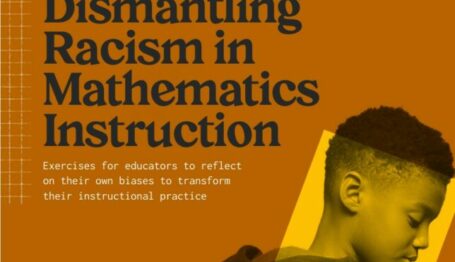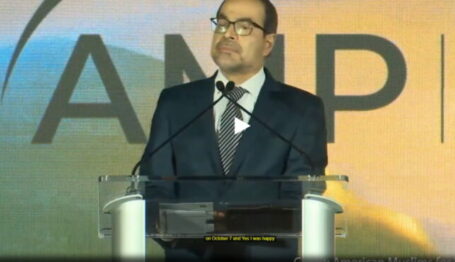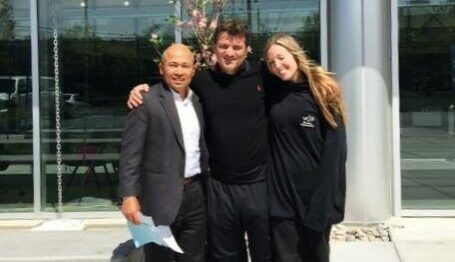Foundation Watch
Foundation Adrift: The History of Casey’s Philanthropy
 Charlie Soderstrom is responsible for another of UPS’s distinctive features: the brown color of its trucks. Soderstrom successfully argued that painting the trucks the color of Pullman railroad cars would make the trucks easier to clean. Ever since then, the company has been nicknamed “Big Brown.” Credit: Mike Mozart. License: https://bit.ly/2m07tnu.
Charlie Soderstrom is responsible for another of UPS’s distinctive features: the brown color of its trucks. Soderstrom successfully argued that painting the trucks the color of Pullman railroad cars would make the trucks easier to clean. Ever since then, the company has been nicknamed “Big Brown.” Credit: Mike Mozart. License: https://bit.ly/2m07tnu.

Foundation Adrift (full series)
The Aimlessness of the Annie E. Casey Foundation | The History of Casey’s Philanthropy | The Casey Foundation Today | The Annie E. Casey Foundation’s Future
Summary: The Annie E. Casey Foundation influences much about how American policymakers think about child welfare. However, the policies promoted by the foundation leave many friends and colleagues of founder James E. Casey scratching their heads, wondering if the humble businessman would approve of the work his legacy now supports. Despite entrusting his foundation to employees of his company, which would theoretically establish a consistent culture for the Annie E. Casey Foundation, some feel it was not enough to protect Mr. Casey’s legacy from the philanthropic sector’s strong leftward drift.
In his lifetime, Casey made three major donations to charity: the Annie E. Casey Foundation, Casey Family Programs. and Seattle University, which awarded him an honorary doctorate in 1957 and which has a building named for him. But there are stories that Casey also gave informally.
Robert Clanin joined UPS in 1970 and rose to become senior vice-president and chief financial officer of the company. He also served as a Casey Foundation trustee between 1995 and 2016. Clanin, who never met Casey, says he was told stories about Casey quietly giving funds to juvenile court judges he respected. “We used to hear stories about Jim Casey setting aside funds so that when delinquent boys came before these judges, the judges would make sure the kids got a good education,” Clanin says.
Casey stepped down as UPS’s CEO in 1962, but he remained a member of the board. Rogers recalled that in 1979, when Casey was 91, he attended his last board meeting. Rogers recalled that the founder apologized, saying, “I’m sorry I couldn’t participate” because his hearing aids had failed.
Although Casey remained on the UPS board until a month before his death, he ceased to be an active member of the company. Planning began for what the Casey Foundation should do. Gary MacDougal joined the UPS board in 1973 and was a Casey Foundation trustee from 1983-2006. He said that when the committee setting up the Casey Foundation—which included MacDougal, George Lamb, and Paul Oberkotter—began discussions, they were concerned about the case of Henry Ford II, who resigned in 1977 as a trustee of the Ford Foundation because of the foundation’s firm anti-capitalist stance.
“In effect, the foundation is a creature of capitalism,” Ford wrote in his resignation letter, “a statement that, I’m sure, would be shocking to many professional staff people in the field of philanthropy. It is hard to discern recognition of this fact in anything the foundation does.”
As John J. Miller notes in A Gift of Freedom, Henry Ford II’s resignation letter was a catalyst that caused John M. Olin to place a term limit on the Olin Foundation. The planners of the Casey Foundation took a different course. They decided that the best way to preserve Casey’s intentions was to make sure that a majority of the Casey Foundation board would be UPS employees. If the UPS members were people steeped in Casey’s ideas, who worked their way up from the truck to the boardroom, those with ties to Casey’s vision could control the foundation.
The primary source for Casey’s vision of what he wanted his money to be used for are eight paragraphs of Casey’s writing that were quoted by Lamb, one of Casey’s successors as CEO of UPS, in a speech delivered in 1986. The first section comes from a speech that Casey made at an early date, probably in 1947 shortly before the Casey Foundation was founded.
“The members of the Casey family have from the beginning intended that the principal purpose of the Annie E. Casey Foundation would be to support needy children in foster homes,” Casey wrote. He added “the Foundation does not support care for children as its exclusive purpose. Other projects are undertaken at the discretion of the trustees.”
Lamb explained that the first grant of the Casey Foundation was to the Archdiocese of Seattle for a program for disadvantaged children. The second quotation from Casey that Lamb provided is from 1965. “The Annie E. Casey Foundation will eventually have assets great enough to support a project of its own—rather than contribute to organizations already set up and in operation. It should be able to do something that will fit the individual needs of the person it wants to help.”
Lamb explained that in 1968 James E. Casey, working with Joseph Reid of the Child Welfare League of America, created two agencies—Casey Family Services on the east coast, and Casey Family Programs in Seattle—that took orphans, placed them with foster parents, and provided a stipend so that the child could have his needs for food and clothing met and get a decent start in life. Casey Family Services, a division of the Annie E. Casey Foundation, stopped being a foster care provider in 2012. The Seattle-based Casey Family Programs continue to exist as an operating foundation separate from, but allied with, the Annie E. Casey Foundation.
MacDougal notes, “Jim really didn’t have much vision of an Annie E. Casey Foundation beyond Casey Family Services. The foster care programs were what he knew and cared about.”
In the views of some foundation leaders, however, James E. Casey left the Casey Foundation more money than was needed to run foster care programs. That claim is arguable: foster care needs across the nation are enormous and could have absorbed much more money. The decision to expand beyond foster care may have been based on concern for other important needs, but additional factors may have been at play. It is very hard for funders to maintain a tight focus on giving over time, even though that often produces the strongest results. The phenomenon even has names, “mission creep” and “donor fatigue.” (The same fatigue is often not felt—quite the reverse—by persons who benefit from the original focus of giving.) In any event, very early on it was decided to branch out into public policy programs that dealt with children and youth.
“We wrestled for a year about what to do with all this money,” Rogers, one of the Casey Foundation’s first trustees, recalled. “Casey’s goal was to take care of delinquent boys…. We finally decided the biggest problem we had was helping kids who had dropped out of school.”
Lamb, in his 1986 speech, said that in 1985 the Casey Foundation “decided to expand the focus of its concern” away from the two Casey foster care programs “to other areas affecting children and youth.” He said that the foundation’s board had decided that there were many problems troubled children faced—drug use, poor schools, disease. Would the foundation try to fight these problems by expanding their spending on foster care, give grants to worthy organizations, or do something else? “The fact is that we do not know how to proceed,” Lamb said. “In some respects, we are a Foundation in transition.”
The transition, however, happened relatively quickly. In a 1997 issue of Foundation Watch, Patrick Reilly analyzed Casey Foundation grantmaking in 1994 and 1995. He found that while the Casey Foundation gave four grants to conservative organizations, including two to the American Enterprise Institute, one to the Hudson Institute, and one to the Institute for Justice, the majority of Casey Foundation grants went to the Left, including grants to the AFL-CIO, Child Welfare League of America, Children’s Defense Fund, the Center for Budget and Policy Priorities, and HandsNet.
The problem with having UPS employees be the repository of Casey’s vision is that United Parcel Service’s leaders, experts in running one of America’s great companies, did not have the knowledge (or time) to evaluate social policy, or determine which recipients of Casey Foundation grants were liberals and which were conservatives. Some may have thought this not important, as long as they were, “helping poor kids.”
In 1990, the Casey Foundation shifted from being an operating foundation to a grantmaking one, and hired Douglas W. Nelson, who headed the Center for the Study of Social Policy, as president. Nelson, who headed the Casey Foundation between
1990-2010, told MacDougal and Lamb, a strong conservative, that he would be a non- partisan leader and they believed him. Yet, Nelson turned out to be a committed liberal, a fact he cleverly concealed from the board. Then, once he was away from the trustees, Nelson created a liberal culture through carefully crafted staff hires and grants which steadily pushed Casey to the Left.
Nelson, MacDougal recalled, was a “chameleon” who “professed to be non- partisan while giving millions to ACORN, the Center for Budget and Policy Priorities, and other hard-core liberal organizations. We trusted too much and didn’t do enough digging.” Even though the Casey Foundation board at that time had to approve all grants, Nelson and his staff were able to push the foundation Left because they presented grant requests in a non-partisan way and treated the trustees with respect. None of the former UPS trustees recall any ideological fights at board meetings. The staff was kind and pleasant to the trustees, and the trustees in turn gave the staff nearly everything they wanted.
[Editor’s Note: Mike Eskew, Casey Board of Trustees Chairman, declined a request for an interview.]
Yet some trustees continued to have concerns about the Casey Foundation’s relentless leftward drift, and in 1994, added Constance Horner to the board. Horner, who was a Casey Foundation trustee between 1994-2006, was director of the Office of Personnel Management in the Reagan Administration and deputy secretary of the Department of Health and Human Services in the George H.W. Bush Administration, as well as a guest scholar at the Brookings Institution. Horner recalled that she was added to the board because some trustees “wanted someone with a social welfare background” who could help them determine which grants were leftist and which ones weren’t. Some Casey trustees, she recalled, “were increasingly aware that the (Casey) foundation executives had a liberal social inclination.”
The UPS trustees, Horner recalled, were “mainstream Republican bordering on libertarian” who weren’t that interested in social policy. Horner was impressed at how each UPS trustee had worked his or her way up from truck driver to the executive suite. “My assignment,” Horner says, “was to raise my voice in meetings, to define the impact of grants that were economically and socially counterproductive.” She recalled that at board meetings MacDougal would express concerns about grants that would bother market-oriented conservatives, while she would raise questions about programs that would trouble social conservatives.
One of Horner’s concerns was that Casey Foundation programs were encouraging dependency by the poor on government programs. While she was on the board, she says, the foundation believed there “had to be a reconfiguration of social welfare policy” and that the best activity of the foundation would be to create programs “that could be brought to scale” and then become new government policies.
Instead, the foundation went on to support organizations like the Center for Budget and Policy Priorities, widely regarded by policymakers as the leading left-leaning think tank for social policy—and the recipient of $14.5 million in Casey Foundation funding from 2000-2016. CBPP strongly opposes work requirements for able-bodied adults receiving government benefits, and last year criticized the Trump administration’s efforts to revive the work requirements modeled after the successful 1996 bipartisan welfare reform. “This all starts with the assumption that if you make people miserable enough, they will go out and find a job,” CBPP’s vice president for family income support policy LaDonna Paretti explained to the New York Times in March 2018.
Another concern Horner had was that the Casey Foundation would not support programs that encouraged marriage, even though there is abundant evidence that marriage helps the poor climb the socio-economic ladder and escape poverty. The foundation, she recalled, backed job-training programs that aided single mothers and jobs programs for their boyfriends, but nothing that would encourage the single mothers to marry the fathers of their children. Only late in her tenure did the foundation begin to back programs that supported the importance of fatherhood.
In her time on the Casey board, said Horner, the foundation was very interested in supporting “convenings,” where social policy experts would gather and deliver papers. These conferences, she says, were “enmeshed in the status quo” and produced little actual change.
One of these “convenings” took place in Washington early in 2001, discussing the prospects for welfare reform in the incoming George W. Bush administration. At the event, co-sponsored by Casey and the Charles Stewart Mott Foundation, radicals affiliated with ACORN—the controversial and now-defunct left-wing organizing group—tried to silence conservative speakers. The radicals first tried to silence American Enterprise Institute fellow Charles Murray with signs and chanting. They then tried to stop Jason Turner, who helped develop welfare reform in New York City and Wisconsin in the 1990s.
Turner now heads the Secretaries’ Innovation Group, an association of Republican state secretaries of human services. He recalled that the protesters spent some time waving signs in an attempt to block him from speaking. Eventually, the radicals put their signs down and Turner was able to finish his speech. Nearly two decades later, Turner says the effort by ACORN to silence him was “outrageous.”
The members of ACORN weren’t at the conference by accident. They were given thousand-dollar grants by Casey to be in the audience. Although some Casey Foundation trustees protested, ACORN continued to receive Casey Foundation grants until the organization collapsed in a sea of scandal and corruption in 2010.
In the next installment of Foundation Adrift, learn more about the Casey Foundation’s program priorities today.



